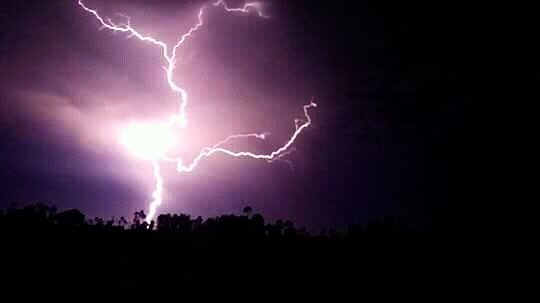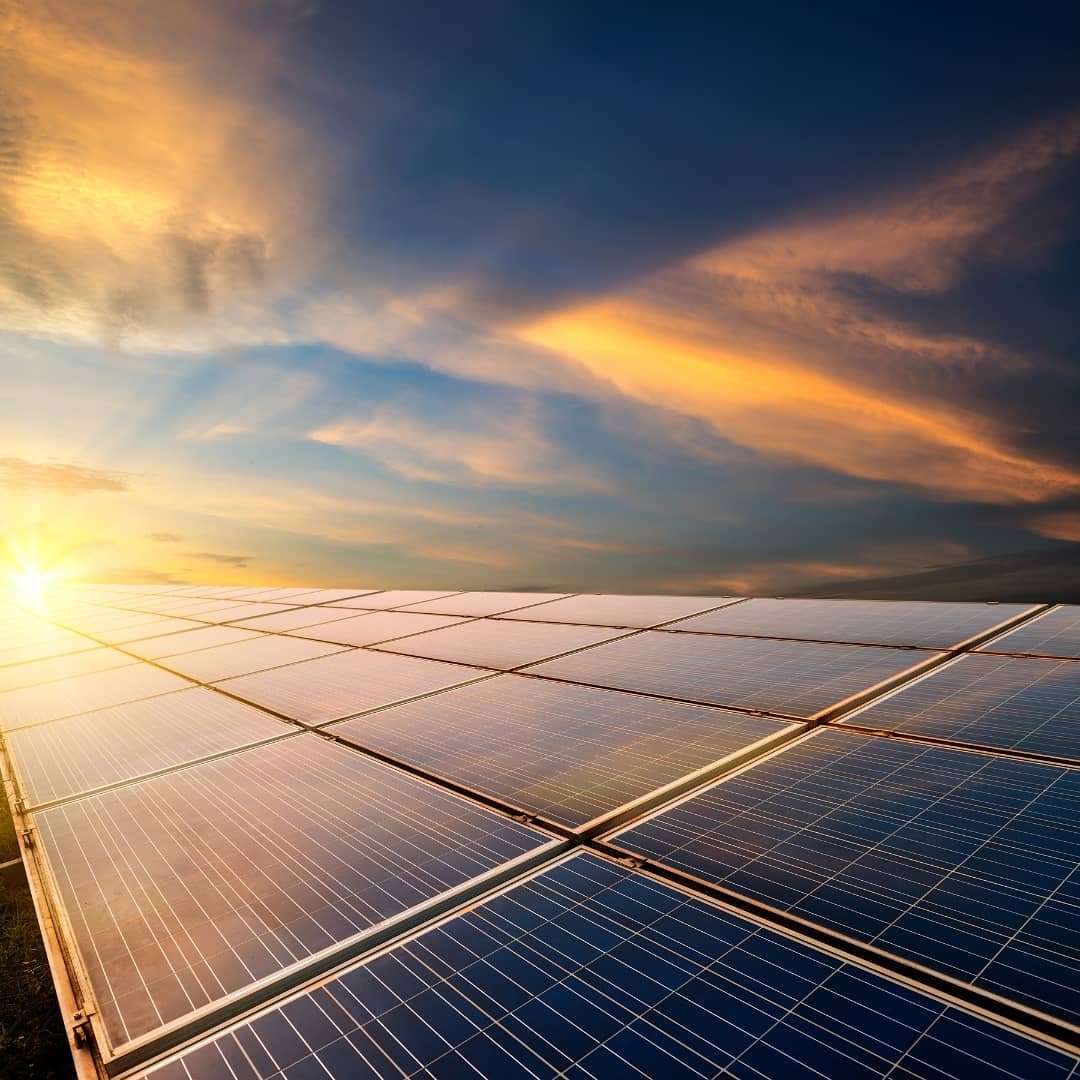
Types of energy: 20 ways energy manifests itself
In physics and chemistry, there are two basic types of energy: kinetic and potential . Kinetic energy is the energy associated with motion . We can see it in nature in the water of the rivers, the waves on the beach, the wind or the heating of objects.
Types of energy
Potential energy, for its part, depends on the condition of a body with respect to a reference . For example, a rock at the top of a mountain has higher potential energy than the same rock at the base of the mountain.
20 ways energy manifests itself
Kinetic and potential energy can occur in a wide variety of ways in nature, as we will see below.
1. Solar energy

Active regions of the Sun
The source of solar energy is the nuclear fusion of hydrogen . In the Sun, four hydrogen nuclei (four protons) fuse into a helium nucleus, which has less mass than the four hydrogen nuclei.
The energy from the nuclear fusion process is converted into radiant energy. It travels through space as ultraviolet (UV) electromagnetic waves, visible light, and infrared rays. Life on Earth depends fundamentally on solar energy.
2. Radiant energy
Radiation such as light, X-rays, and heat are forms of energy that we know as radiant energy . They appear as electromagnetic waves that originate from the simultaneous vibration of electrons in an electric and magnetic field. These waves travel through space at the speed of light 300,000 km / s.

Tanning beds or solariums rely on UV radiation to cause the skin to tan.
3. Nuclear energy
The nuclear energy is stored in the nucleus of the atom, result of the forces holding the protons and neutrons.
In a nuclear reaction, an atom is transformed into a different one with the release of energy, either through radioactive decay, nuclear fission or nuclear fusion.
In nuclear fission, a heavy nucleus receives a neutron that makes it unstable, releasing energy and two new atoms.
4. Chemical energy
Another form of potential energy is what we get between atoms that join together. This is the chemical energy , which depends on the atomic structure and the attractive forces in the bonds of a molecule. Chemical energy can be released through chemical reaction .
For example, gasoline is a mixture of hydrocarbons that when it undergoes a combustion reaction releases its chemical energy into thermal energy, which is used to power engines. The chemical energy of gasoline is released by combustion inside the pistons, producing movement.
5. Binding energy
Binding energy in chemistry is the measure of the strength of the bond between two atoms . It is calculated experimentally by measuring the heat it takes to break a mole of molecules into their individual atoms. The higher the binding energy, the stronger and closer the atoms will be bound together.
For example, in the HOH water molecule the binding energy is equal to 460 kiloJoule per mole (kJ / mol), which is the same as saying that it is the energy required to break the bond between oxygen and the two atoms of hydrogen in one mole of water.
6. Electric power
Electric energy is the product of the attraction of positively and negatively charged particles and of the movement of electric charges that manifests itself in electricity . It is a form of potential and kinetic energy.
In atoms, negatively charged electrons can move freely in certain materials called conductors. The movement or flow of these electrons is what we know as an electric current .
Electricity is the engine of modern civilization as we know it today. Electric energy is in electrical and electronic equipment, in our means of transportation, in our entertainment and many other human activities.
7. Gravitational potential energy
Gravitational potential energy is one of the forms of potential energy. In this case, we use the Earth as a reference body to which a gravitational field is associated. The Earth exerts a force of attraction on objects towards its center. That is why we say that things “fall”.
8. Bond dissociation energy
The dissociation energy of the bond or enthalpy of bond is used in chemistry to define the change in total energy of the system when a covalent bond breaks by homolysis, that is, in the separation of the atoms the electrons are divided equally. For example, in ethane (C 2 H 6 ) the dissociation energy of one of the CH bonds will be 423 kJ / mol.
Each bond in a molecule will have its own dissociation energy, so a molecule with four bonds will need more energy to break than a molecule with only one bond.
9. Activation energy
In chemistry, the term “activation energy” is used to designate the amount of energy that is required for a reaction to occur . Many chemical reactions in living beings do not occur spontaneously, so it takes a “push” of energy for them to take place. The source of the activation energy is usually the thermal energy of the surroundings.
10. Elastic potential energy

A catapult harnesses elastic potential energy to launch objects.
Elastic potential energy is a form of potential energy as it relates to an initial condition of an object that can be stretched, compressed, or twisted. Stretching a rubber band increases its potential energy so work can be done. This is the working principle of arrows and catapults.
11. Mechanical energy
Mechanical energy combines potential energy and kinetic energy, that is, the motion and position of an object come together to do work . For example, the carousel on a roller coaster has mechanical energy that is the sum of its potential energy when it is at the top of the mountain and kinetic energy when it gains speed. At all times the mechanical energy will be the same, what will vary will be the potential and kinetic energies, depending on the height and speed of the cart.
12. Sound energy
Sound energy is the energy that we get in sound . It is reflected as waves that vibrate through physical media such as water, air, and solid materials. It is a form of mechanical energy in that it involves the vibration of the particles and the distance they travel.
Sound energy is used in:
- The SONAR navigation and sound range system.
- The ecosonogram.
- Ultrasound effect Doppler .
13. Thermal energy
One way kinetic energy is presented is in thermal energy or internal energy. It is kinetic energy because it is derived from the vibrations or movement of the molecules and atoms that make up the bodies. We can measure this energy with the thermometer, since temperature is a reflection of this movement. A body with a temperature of 50ºC will have more thermal energy than the same body at 0ºC.
The Heat is the flow of thermal energy between bodies. This process can be due to three phenomena:
- Radiation : heat is transferred through infrared radiation.
- Conduction : transfer occurs by contact of two bodies at different temperatures.
- Convection : hot air transfers heat.
14. Geothermal energy

Geyser in El Tatio, Chile.
Geothermal energy corresponds to the heat of the Earth , a source of energy that lies below the surface. Although geothermal energy is thought to manifest itself in hot springs and geysers, it goes further. The energy potential stored inside the Earth can be harnessed through geothermal wells.
One of the oldest uses of geothermal energy was space heating, recreation and therapy, with the use of thermal waters. Iceland is one of the countries that gets the most benefit from geothermal energy
15. Energía magnética

Los trenes magnéticos se mueven gracias a la energía magnética.
La energía magnética es la energía producto de la atracción y posición de los cuerpos en un campo de fuerza magnética capaz de realizar un trabajo. El ejemplo clásico lo conseguimos en dos imanes cuando los mantenemos separados. En este punto su energía potencial magnética es mayor que cuando estan juntos.
Cada imán posee un campo magnético que es es el área de acción donde se siente la atracción, y dos regiones opuestas positivas y negativas, llamadas polos magnéticos. El polo positivo atrae al polo negativo, mientras que los polos iguales se repelen.
Los maglev son ferrocarriles que se mueven gracias a la energía magnética. Estos levitan o flotan sobre una plataforma magnetizada a intervalos produciendo el movimiento. Es también un ejemplo de como la energía magnética se transforma en energía cinética.
16. Energía eólica

La turbinas eólicas generan electricidad a partir del viento.
Cuando el aire se pone en movimiento es lo que conocemos como viento. La energía cinética del viento se ha utilizado desde la antigüedad para realizar una diversidad de trabajos, como navegar, moler el grano (molinos de viento), y más recientemente, para generar electricidad por las turbinas eólicas.
17. Energía mareomotriz
La energía cinética de las corrientes marinas aprovecha el ascenso y descenso del agua del mar producidos por las fuerzas gravitatorias del Sol y la Luna en forma de energía mareomotriz.
18. Energía azul

La energía contenida en los océanos es abundante mas poco utilizable
La energía proveniente del océano se conoce como energía azul, e incluye:
- la energía de las mareas,
- la energía de las corrientes,
- la energía de las olas,
- la energía térmica y
- la ósmosis.
El océano es una de las fuentes más abundantes de energía en la Tierra pero probablemente la menos explotada. Teóricamente, los océanos podrían proporcionar energía a todo el planeta sin contaminar de forma más confiable y predecible que el Sol y el viento.
19. Energía oscura
La energía oscura es una energía que impregna el espacio, de hecho, representa aproximadamente el 70% de los componentes del Universo. El término “energía oscura” fue acuñado por el cosmólogo Michael Turner en 1998 para darle nombre a la constante cosmológica propuesta por Einstein a principios del siglo XX.
A finales del siglo XX, dos grupos de astrónomos se dedicaron a estudiar el brillo de un tipo particular de supernova, las supernovas Ia. Estas son estrellas enanas blancas que explotan con tal intensidad y brillo que parecen 1000 millones de soles.
Ambos grupos encontraron que el brillo de las supernovas era menos intenso de lo que se esperaba, es decir, estaban más alejadas que el cálculo inicial obtenido para un universo de materia únicamente. Esta expansión acelerada del Universo se explica por un componente con una presión fuertemente negativa al que se denominó energía oscura.
20. Energía de la materia
In 1905, Albert Einstein presented the “Special Theory of Relativity”, where he derived his famous equation E = mc 2 , sometimes called the law of mass-energy equivalence. This formula indicates that the mass of a body ( m ) is a measure of the energy content ( E ) and the speed of light in vacuum ( c ) is a constant equal to approximately 300 million meters per second.
Radioactive elements convert part of their mass into energy. With this formula you can calculate the energy that is released in a nuclear reaction, which is the binding energy that keeps the nucleus of the atom compact.






